Related Research Articles

A carcinogen is any substance, radionuclide, or radiation that promotes carcinogenesis. This may be due to the ability to damage the genome or to the disruption of cellular metabolic processes. Several radioactive substances are considered carcinogens, but their carcinogenic activity is attributed to the radiation, for example gamma rays and alpha particles, which they emit. Common examples of non-radioactive carcinogens are inhaled asbestos, certain dioxins, and tobacco smoke. Although the public generally associates carcinogenicity with synthetic chemicals, it is equally likely to arise from both natural and synthetic substances. Carcinogens are not necessarily immediately toxic; thus, their effect can be insidious.
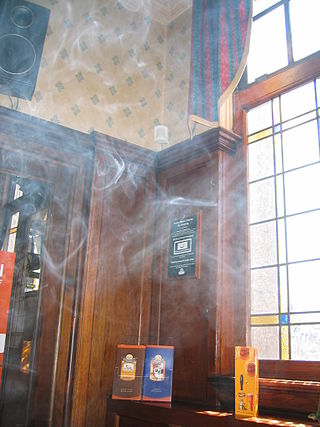
Passive smoking is the inhalation of tobacco smoke, called passive smoke, secondhand smoke (SHS) or environmental tobacco smoke (ETS), by individuals other than the active smoker. It occurs when tobacco smoke diffuses into the surrounding atmosphere as an aerosol pollutant, which leads to its inhalation by nearby bystanders within the same environment. Exposure to secondhand tobacco smoke causes many of the same diseases caused by active smoking, although to a lower prevalence due to the reduced concentration of smoke that enters the airway.
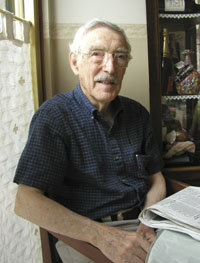
Bruce Nathan Ames is a prominent American biochemist. He is a professor of biochemistry and Molecular Biology Emeritus at the University of California, Berkeley, and was a senior scientist at Children's Hospital Oakland Research Institute (CHORI). Throughout his career, Dr. Ames has made significant contributions to understanding the mechanisms of mutagenesis and DNA repair. One of his most notable achievements is the invention of the Ames test, a widely used assay for easily and cheaply evaluating the mutagenicity of compounds. The test revolutionized the field of toxicology and has played a crucial role in identifying numerous environmental and industrial carcinogens.

Benzo[a]pyrene (BaP or B[a]P) is a polycyclic aromatic hydrocarbon and the result of incomplete combustion of organic matter at temperatures between 300 °C (572 °F) and 600 °C (1,112 °F). The ubiquitous compound can be found in coal tar, tobacco smoke and many foods, especially grilled meats. The substance with the formula C20H12 is one of the benzopyrenes, formed by a benzene ring fused to pyrene. Its diol epoxide metabolites, more commonly known as BPDE, react with and bind to DNA, resulting in mutations and eventually cancer. It is listed as a Group 1 carcinogen by the IARC. In the 18th century a scrotal cancer of chimney sweepers, the chimney sweeps' carcinoma, was already known to be connected to soot.

In organic chemistry, nitrosamines are organic compounds with the chemical structure R2N−N=O, where R is usually an alkyl group. They feature a nitroso group bonded to a deprotonated amine. Most nitrosamines are carcinogenic in nonhuman animals. A 2006 systematic review supports a "positive association between nitrite and nitrosamine intake and gastric cancer, between meat and processed meat intake and gastric cancer and oesophageal cancer, and between preserved fish, vegetable and smoked food intake and gastric cancer, but is not conclusive".

N-Nitrosonornicotine (NNN) is a tobacco-specific nitrosamine produced during the curing and processing of tobacco.

In molecular genetics, a DNA adduct is a segment of DNA bound to a cancer-causing chemical. This process could lead to the development of cancerous cells, or carcinogenesis. DNA adducts in scientific experiments are used as biomarkers of exposure. They are especially useful in quantifying an organism's exposure to a carcinogen. The presence of such an adduct indicates prior exposure to a potential carcinogen, but it does not necessarily indicate the presence of cancer in the subject animal.
Gio Batta Gori is an epidemiologist and fellow with the Health Policy Center in Bethesda, Maryland which he established in 1997 and where he specializes in risk assessment and scientific research. He was deputy director of the United States' National Cancer Institute's Division of Cancer Cause and Prevention, where he directed the Smoking and Health Program and the Diet and Cancer Program.
Tobacco-specific nitrosamines (TSNAs) comprise one of the most important groups of carcinogens in tobacco products, particularly cigarettes and fermented dipping snuff.

Joseph W. Cullen was an American cancer prevention and rehabilitation researcher and briefly director of the AMC Cancer Research Center (1989-1990). He previously worked at the VA Hospital in Maryland (1968-1973), the National Institutes of Health (1973), the National Cancer Institute (NCI), and the Jonsson Comprehensive Cancer Center (1976-1982), holding high-level positions such as division director at several. He was a coordinator, creator, and researcher for the Smoking Tobacco and Cancer Program at the NCI, the largest anti-smoking campaign in the world at that time. Cullen wrote more than 90 publications in his lifetime, including four books.

Harry V. Gelboin (1929–2010) was an American cancer research scientist, particularly in chemical carcinogenesis. From 1966 to 1999, he was Chief of the Laboratory of Molecular Carcinogenics at the National Cancer Institute (NCI), part of the National Institutes of Health (NIH). His research focused on the activation and detoxification of drugs and carcinogens. He is best known for his studies of the genetic mechanisms by which normal cells transform into malignancy, which constituted a major advance in cancer research.
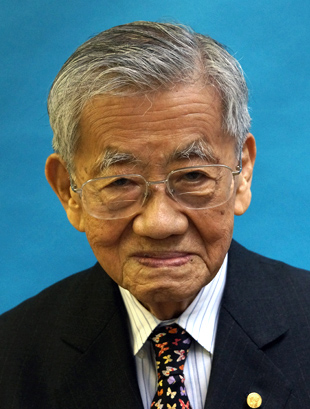
Takashi Sugimura was a Japanese biochemist, famous for research on chemical carcinogens. He received the Japan Prize for the contribution to establishment of fundamental concept on causes of cancer. He was elected as President of the Japan Academy on October 15, 2013, serving till 2016 and was replaced with Hiroshi Shiono.
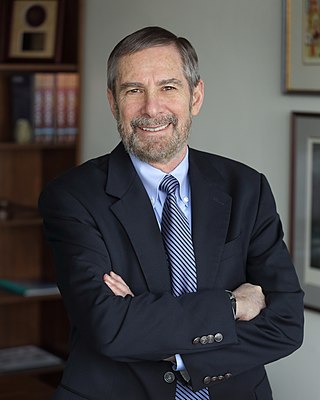
Douglas R. Lowy is the current Principal Deputy Director of the U.S. National Cancer Institute (NCI) and Chief of the Laboratory of Cellular Oncology within the Center for Cancer Research at NCI. Lowy served as Acting Director of NCI between April 2015 and October 2017 following the resignation of Harold E. Varmus, M.D., and again between April and November 2019, while Director Norman Sharpless served as the Acting Commissioner of the U.S. Food and Drug Administration. He resumed the role of Acting Director on May 1, 2022, when Sharpless stepped down until October 3, 2022 when Monica Bertagnolli was appointed Director. He resumed the role again in November 2023 after Bertagnolli resigned to serve as director of the National Institutes of Health.

Steven R. Tannenbaum was born and grew up in the Rockaways of Queens, New York City. He attended the Hebrew Institute of Long Island through 9th grade, then moved to Hewlett, Long Island where he graduated from Woodmere H.S. in 1954. He attended the Massachusetts Institute of Technology from 1954-1962, earning a B.S. in Food Technology in 1958 and a PhD. in Food Science in 1962. He was then appointed to Assistant Professor in 1964 in the Department of Food Science and Technology leading up to Full Professor in 1974. Throughout his career he was mentored by Samuel A. Goldblith up until his death in 2001. In 1973 Tannenbaum did a sabbatical at the Hebrew University of Jerusalem, where he decided to switch his career into cancer research at the suggestion of Gerald Wogan.
The American Association for Cancer Research gives several annual awards for significant contributions to the field of cancer research.

Curtis. C. Harris is the head of the Molecular Genetics and Carcinogenesis Section and chief of the Laboratory of Human Carcinogenesis at the Center for Cancer Research of the National Cancer Institute, NIH.
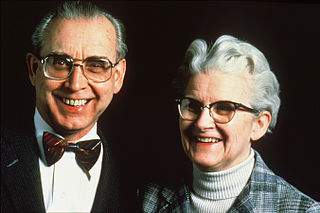
Elizabeth Cavert Miller was an American biochemist, known for fundamental research into the chemical mechanism of cancer carcinogenesis, working closely with her husband James A. Miller.
Suse Broyde is an American chemical biologist who is a professor of biology and an affiliate professor of chemistry at New York University. Her research focuses on the molecular mechanisms that process DNA damage induced by environmental and endogenous carcinogens, notably mutagenesis and repair.
Mitchell H. Gail is an American physician-scientist and biostatistician. He is a distinguished investigator at the National Cancer Institute.
Emmanuel Farber was a Canadian-American physician, pathologist, biochemist, and oncologist. He is known for his research on the biochemistry of carcinogenesis.
References
- ↑ "Stephen Hecht Wins 2009 Founders Award". Division of Chemical Toxicology. American Chemical Society. Retrieved 7 June 2017.[ dead link ]
- ↑ "Stephen S. Hecht". Experts. American Chemical Society. Archived from the original on 2017-03-21. Retrieved 2017-03-21.
- ↑ "Stephen S. Hecht, Ph.D., named new Editor-in-Chief of Chemical Research in Toxicology". American Cancer Society. 18 July 2012.
- 1 2 "Stephen Hecht". University of Minnesota.
- ↑ Macur, Juliet (8 February 2017). "The N.H.L.'s Problem With Science". New York Times.
- ↑ Maugh, Thomas (24 August 1998). "Newborns Smoke Carcinogen". Los Angeles Times. Archived from the original on 22 March 2017. Retrieved 21 March 2017.
- ↑ Maugh, Thomas (8 March 2001). "New Study Supports Theory of Secondhand Smoke's Effects". Los Angeles Times. Archived from the original on 22 March 2017. Retrieved 21 March 2017.
- ↑ "AACR Award for Outstanding Achievement in Cancer Prevention Research Recipients". AACR.org. Archived from the original on 2014-12-02. Retrieved 2017-04-02.